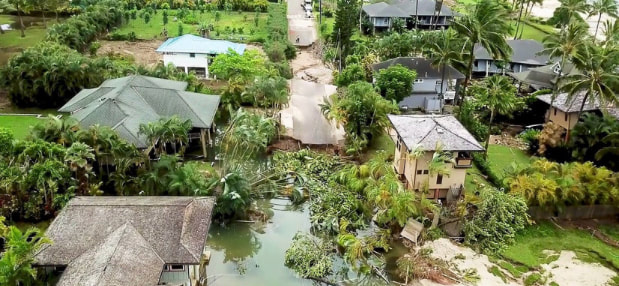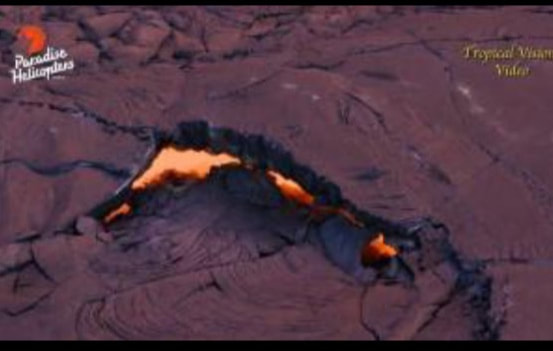|
Lately Hawai’i just isn’t getting a break! We have experienced an unusually active rainy season throughout the islands and now, on the Big Island, there is a significant movement of magma which is threatening to open another rift(http://www.civilbeat.org/2018/05/underground-magma-on-the-move-as-quakes-rattle-volcano/). So I’d like to take a little time to discuss the dangers to the voice from these environmental hazards and what you might be able to handle these hazards.
Theoretically Honolulu, gets an average of 270 days of sunshine a year. (https://www.bestplaces.net/climate/city/hawaii/honolulu)However, we seem to have had an abundance of rain, not sunshine, of late. Waipa Kaua’i will likely have the dubious honor of the greatest amount of rain falling in a 24 hour period, ever in recorded history (https://weather.com/news/weather/news/2018-04-26-kauai-hawaii-new-us-rainfall-record). While the rest of the eight main islands did not suffer from quite that much rain, there were flash floods, leaving home owners with as much as three feet of water and mud inside. Some of these houses will likely be declared uninhabitable due to structural damage, but especially with the rainy days still continuing there is another danger—MOLD. As a tropical island our ambient humidity is between 65-75%. Remember what average means, 50 out of 100 days the humidity will be lower than these numbers, and 50 days out of 100 the humidity will be higher. Mold surrounds us. This isn’t so much a problem when we are outside but the Centers for Disease Control do recognize that “Exposure to mold or dampness may also lead to development of asthma in some individuals.” Which ones you ask? Just like being allergic to poison ivy, nobody really knows, if or when, a non-allergic person will start reacting to it; but we do know that there are high rates of sensitivity to mold. The best cure for sensitivity to mold, is the prevention of exposure.( https://www.cdc.gov/mold/faqs.htm)The preceding link to the CDC has some ideas of prevention and abatement. Interestingly this appears to be for all mold. In the past 15-20 years there has been controversy regarding a link between “black mold,” also known as Stachybotrys chatarum and pulmonary hemorrhage(bleeding in the lungs). However, follow up studies have failed to cporroborate this link. According to the CDC while many molds “can produce toxins…the molds themselves are not toxic, or poisonous.” Regardless, exposure should be limited especially indoors. According to the Mayo clinic (https://www.mayoclinic.org/diseases-conditions/mold-allergy/symptoms-causes/syc-20351519)symptoms of mold exposure include: sneezing, runny nose, cough and postnasal drip, itchy eyes, nose and throat, watery eyes, and dry and scaly skin. If you believe you have been exposed to mold please follow up with a healthcare worker especially if you are experiencing symptoms. If you are attempting to remove mold from a water damaged areas, check with CDC and OSHA for guidelines for protective equipment.(https://www.osha.gov/SLTC/molds/control.html) Lava is in the news again as our Islands’ current active creator, and destroyer, known as Kilauea Volcano, has been moving a significant amount of magma around. Now magma is molten rock that lives underground. When it breaks surface it is then known as lava. This is a situation that is magnificent and such a temptation to view close up. However, your voice doesn’t want you to. I have previously posted about the dangers of vog, which is a mixture of poisonous gases and particulates(tiny particles) that can cause problems for everyone by irritating the nose and and throat. Vog is created by the exposure of magma to the surface so any increase of lava can mean an increase of vog. While vog can cause problems, especially to those with compromised immune systems or those with a history of allergies, enough vog and lava can create problems for anyone. While the volcanos of Hawai’i are relatively friendly to humans, there have been times of significant explosions which can hurl tiny particles throughout the air. No one is immune to the burning and irritation of a particle of freshly catapulted basaltic glass, known as Pele’s hair, or other debris which might be ejected. Again prevention is key here. Tours have been shut down, and local people have been urged to leave the area or stay indoors with 14 days’ worth of supplies. Do not attempt to enter any zone that has been classified as off limits, remember, lava can reach temperatures of 2,120 degrees Fahrenheit. Even “cooled” lava is around 700-800 degrees. If you are smelling a scent of rotting eggs, you are inhaling some of the poisonous gases that are emitted by the volcano and lava. Unfortunately, not all the gases have an obvious scent to humans. Asphyxiation is the most common cause of death in a volcanic event. Few if any respirators or masks are designed to withstand temperatures and many of the gases that are present in an eruption. If you or a family member has a breathing problem, run the air conditioner. Please take this seriously. If you have been exposed or near the area and are feeling ill seek the help of a medical professional. How does all this information pertain to the voice you ask. Well there are the upper respiratory symptoms which often negatively impact the ability to produce a voice clear of a “gurgle.” There is also the fact that your body is your instrument, any injury to the body has either a direct or indirect effect on the voice. Be safe, enjoy Pele’s show from the comfort of your home. Try this web cam from US Geological Service. https://www.google.com/url?sa=t&rct=j&q=&esrc=s&source=web&cd=3&cad=rja&uact=8&ved=0ahUKEwjtmszk1ejaAhVJzmMKHVpWAS0QFggtMAI&url=https%3A%2F%2Fwww.nps.gov%2Fhavo%2Flearn%2Fphotosmultimedia%2Fwebcams.htm&usg=AOvVaw0ID3q5-2Hb5d-Ry95F5GLf
0 Comments
Your comment will be posted after it is approved.
Leave a Reply. |
Trissa DiBenedetto WAlterIs a singer, voice teacher, speech language pathologist, and certified vocologist Archives
July 2020
Categories |


 RSS Feed
RSS Feed